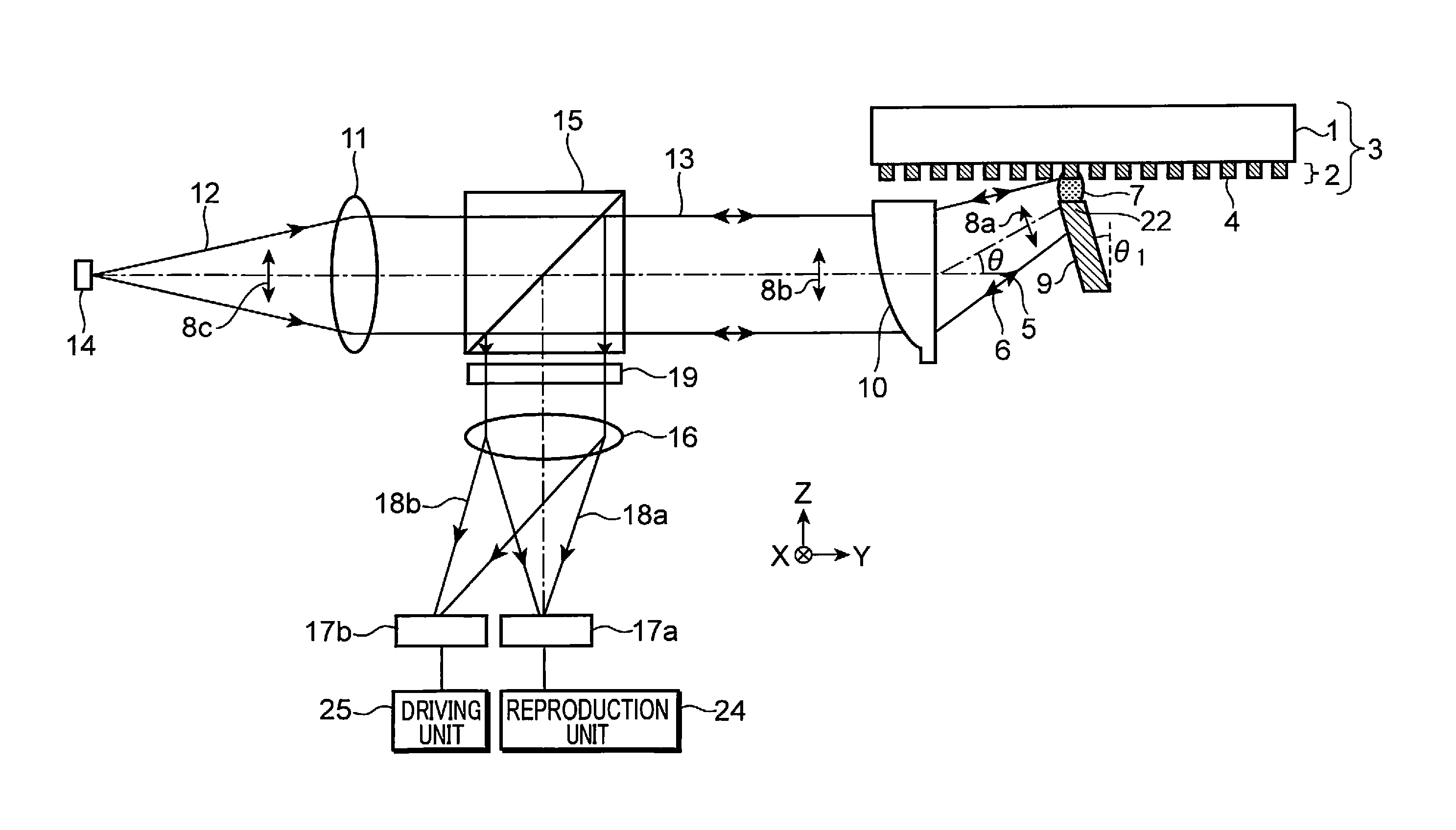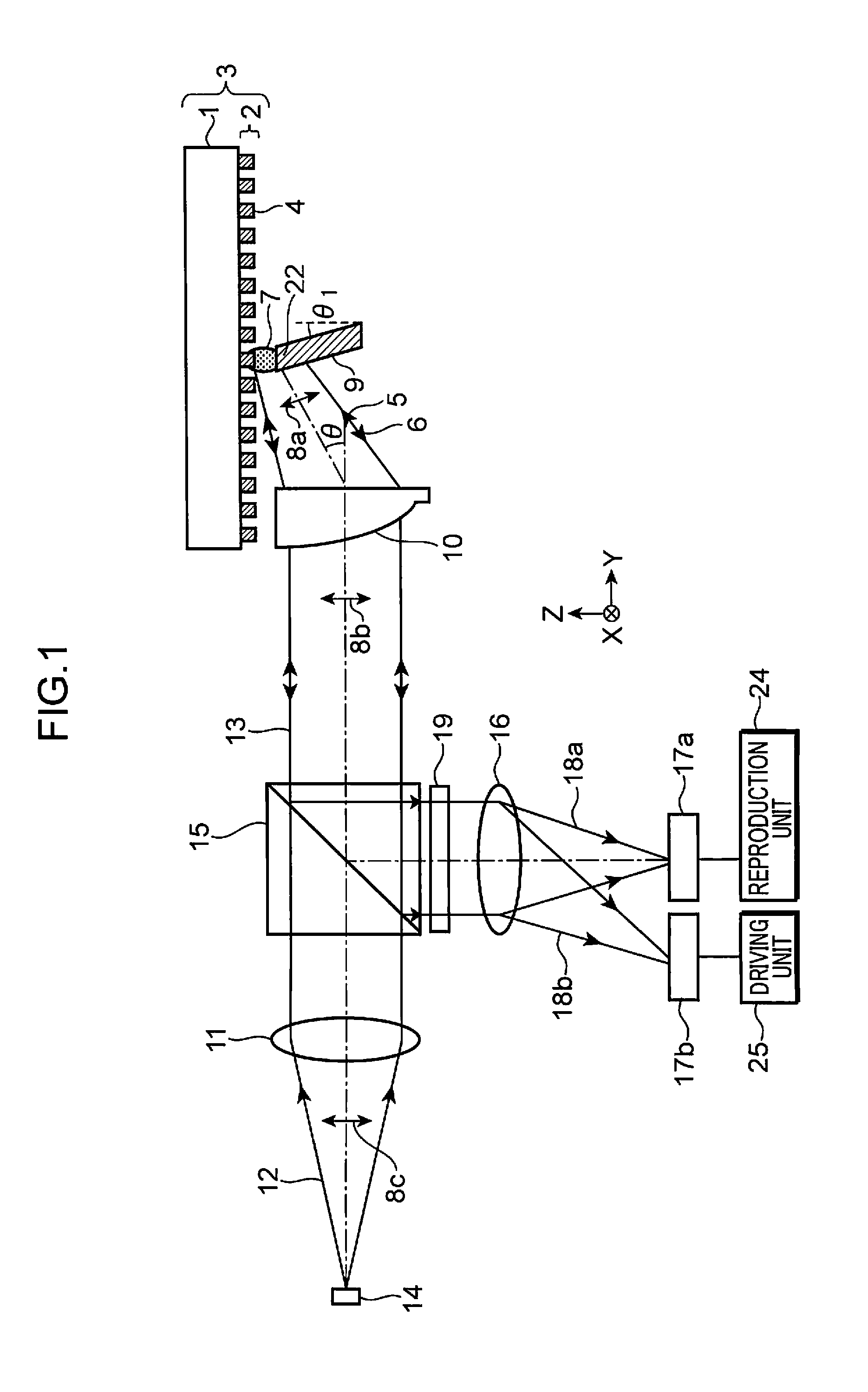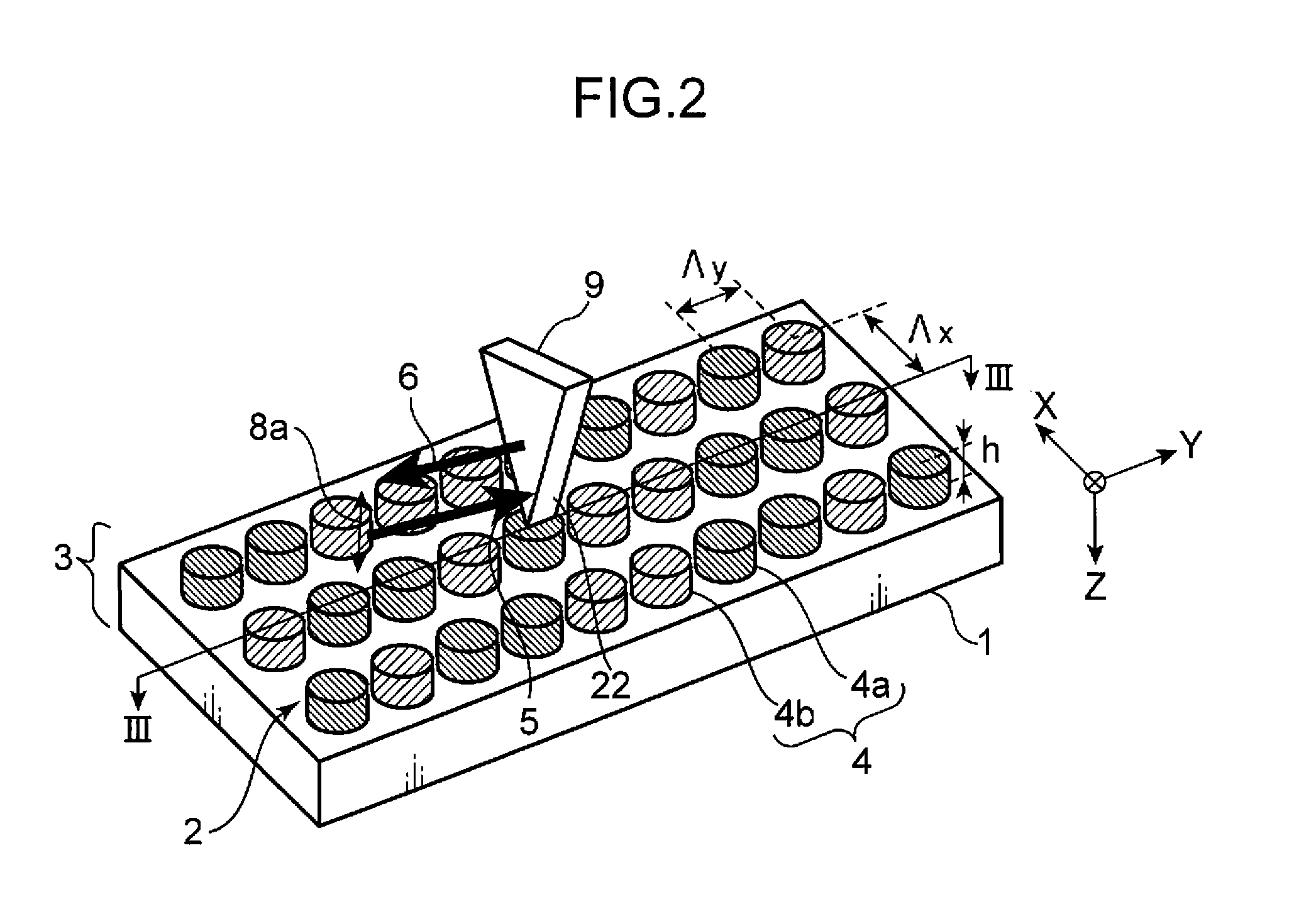Optical information reproduction device, optical information reproduction method, and information recording medium
a technology of optical information and reproduction method, which is applied in the field of optical information reproduction device, optical information reproduction method, and information recording medium, can solve the problems of difficult size (recording mark length) of recording mark that can be reproduced, and difficulty in achieving further increase in density, so as to achieve satisfactory reproduction of information and improve the modulation degree of reproduction signal
- Summary
- Abstract
- Description
- Claims
- Application Information
AI Technical Summary
Benefits of technology
Problems solved by technology
Method used
Image
Examples
first embodiment
[0029]First, an optical information reproduction device, an optical information reproduction method, and an information recording medium in a first embodiment of the present invention are explained in detail with reference to FIGS. 1, 2, 3A, and 3B.
[0030]FIG. 1 is a diagram showing the configuration of an optical information reproduction device in a first embodiment of the present invention. FIG. 2 is an explanatory diagram showing a plasmon resonance element of the optical information reproduction device in the first embodiment of the present invention and a state in which information is reproduced from an information recording medium. FIG. 3A is a sectional view taken along line III-III in FIG. 2 showing a state of the vicinity of the plasmon resonance element in the case in which, in the first embodiment of the present invention, a recording region of the information recording medium is in a recorded state and a plasmon resonance degree is large. FIG. 3B is a sectional view taken...
second embodiment
[0088]An information recording medium in a second embodiment of the present invention is explained next. FIG. 5 is a sectional view showing the configuration of an information recording medium 3c in the second embodiment of the present invention. The information recording medium 3c is different from the information recording medium 3 in the first embodiment in that a protective layer 23, of which dielectric constant has a real part with a positive sign, is formed in an upper layer of the recording region 4 of the recording layer 2 formed on the substrate 1. In other words, the information recording medium 3c further includes, in the upper layer of the recording region 4, the protective layer 23 of which dielectric constant has a real part with a positive sign and which is used for protecting the recording region 4. Since the protective layer 23 is provided, it is possible to improve resistance to environment of the particle functioning as the recording region 4 formed of the recordi...
third embodiment
[0092]An optical information reproduction device in a third embodiment of the present invention is explained centering on differences from the optical information reproduction device in the first embodiment with reference to FIGS. 6, 7, 8A, and 8B.
[0093]FIG. 6 is a diagram showing the configuration of the optical information reproduction device in the third embodiment of the present invention. FIG. 7 is an explanatory diagram showing a plasmon resonance element of the optical information reproduction device in the third embodiment of the present invention and a state in which information is reproduced from an information recording medium. FIG. 8A is a sectional view taken along line VIII-VIII in FIG. 7 showing a state of the vicinity of the plasmon resonance element in the case in which, in the third embodiment of the present invention, a recording region of the information recording medium is in a recorded state and a plasmon resonance degree is large. FIG. 8B is a sectional view t...
PUM
| Property | Measurement | Unit |
|---|---|---|
| wavelength | aaaaa | aaaaa |
| size | aaaaa | aaaaa |
| size | aaaaa | aaaaa |
Abstract
Description
Claims
Application Information
 Login to View More
Login to View More - R&D
- Intellectual Property
- Life Sciences
- Materials
- Tech Scout
- Unparalleled Data Quality
- Higher Quality Content
- 60% Fewer Hallucinations
Browse by: Latest US Patents, China's latest patents, Technical Efficacy Thesaurus, Application Domain, Technology Topic, Popular Technical Reports.
© 2025 PatSnap. All rights reserved.Legal|Privacy policy|Modern Slavery Act Transparency Statement|Sitemap|About US| Contact US: help@patsnap.com



